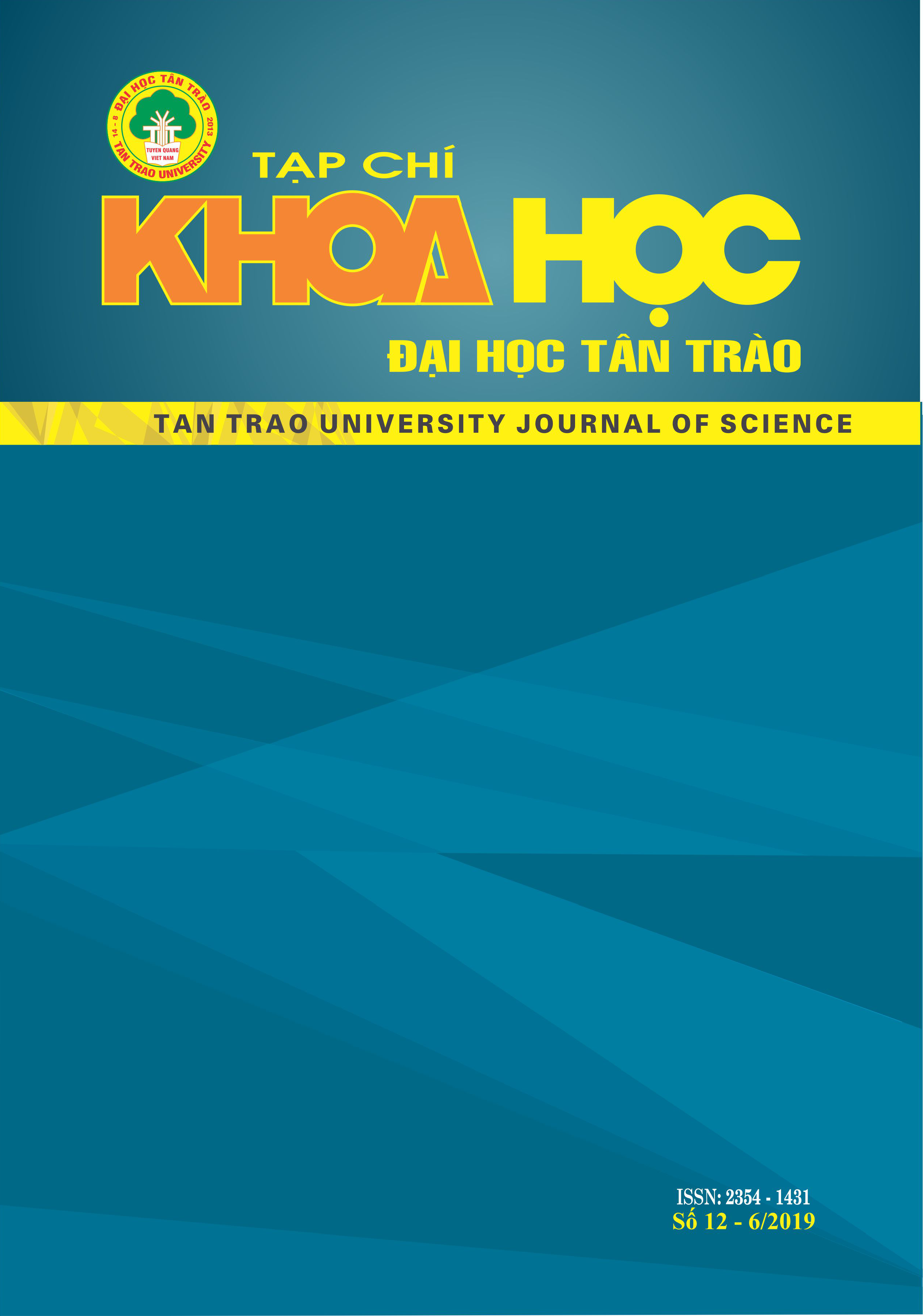Nghiên cứu ứng dụng, sử dụng chế phẩm nấm ký sinh Metarhizium anisopliae phòng trừ rầy nâu, rầy lưng trắng hại lúa tại Tuyên Quang
DOI:
https://doi.org/10.51453/2354-1431/2019/269Từ khóa:
Nấm ký sinh Metarhizium sp; rầy nâu; rầy lÆ°ng trắng.Tóm tắt
Rầy nâu, rầy lưng trắng (rầy) được coi là một trong những loài sâu hại chính trên cây lúa ở trên thế giới nói chung và Việt Nam nói riêng. Rầy không những gây hại trực tiếp làm giảm năng suất và phẩm chất lúa, mà còn là môi giới truyền virus gây bệnh trên lúa. Do vậy để phòng trừ rầy người nông dân đã sử dụng rất nhiều loại thuốc hoá học (BVTV), tuy nhiên thuốc BVTV trừ rầy thường là thuốc có độc tính cao, chậm phân hủy có thể giữ tác dụng rất lâu trong sản phẩm. Để thay thế dần việc sử dụng thuốc hóa học trong sản xuất nông nghiệp, gần đây các nhà khoa học đã nghiên cứu đã thành công việc sử dụng nấm Metarhizium anisopliae (M. anisopliae) trong phòng trừ sau hại nói chung và phòng trừ rầy hại lúa nói riêng. Kết quả thử nghiệm tại Tuyên Quang năm 2015, 2016 cho thấy: Chế phẩm M. anisopliae ở liều lượng 8 kg/ha có hiệu lực trừ rầy nâu, rầy lưng trắng hại lúa, hiệu lực 10 ngày sau xử lý đạt từ đến 61,68-65,16%, vừa không ảnh hưởng đến sự sinh trưởng, phát triển, năng suất, chất lượng của cây lúa, vừa không ảnh hưởng đến môi trường sinh thái.
Tải xuống
Tài liệu tham khảo
1. Cục BVTV: Báo cáo tổng kết công tác BVTV các tỉnh phía Bắc năm 2013,2014,2015 .
2. Nguyễn Thị Lộc, và cộng sự (2002), “Ảnh hưởng của nấm trắng và nấm xanh đối với một số thiên địch của sâu hại lúa”. Tạp chí Nông nghiệp và Phát triển Nông thôn, Số 6-2002,
3. Nguyễn Thị Lộc và cộng sự (2002), Nghiên cứu, sản xuất và ứng dụng hai chế phẩm sinh học để quản lý các loài sâu hại lúa, Viện lúa ĐBSCL,
4. Phạm Thị Thùy và cộng sự (1996), Nghiên cứu công nghệ sản xuất và ứng dụng chế phẩm nấm Beauveria và Metarhizium để phòng trừ một số sâu hại cây trồng (1991- 1995), Tuyển tập công trình nghiên cứu bảo vệ thực vật, 1990- 1995. NXB Nông nghiệp, Hà Nội
5. Nguyễn Ngọc Tú, Nguyễn Cửu Thị Hương Giang (1997), Bảo vệ cây trồng từ các chế phẩm từ vi nấm, NXB Nông nghiệp TP. Hồ Chí Minh.
6. Viện Bảo vệ thực vật (2001), Nghiên cứu áp dụng công nghệ vi sinh (vi khuẩn, vi nấm, virut) để sản xuất chế phẩm sinh học BVTV trong phòng trừ sâu hại cây trồng, Báo cáo tổng kết đề tài khoa học cấp nhà nước KHCN.02.07B giai đoạn 1996-2000.
7. Viện Bảo vệ thực vật đã nghiên cứu và phân lập nấm Metarhizium anisopliae ký sinh trên các loại sâu hại cây trồng như trên rầy nâu hại lúa, bọ cánh cứng hại dừa, bọ hung hại mía, châu chấu hại ngô, mía và mối đất hại cây trồng Năm 1996…
8. Hall F.R and Menn J.J (1999), Biopesticides- Use and delivery, Humana Press Inc
9. Milner (1994) Biological control of termites: results and experiences whinin a CSIRO project in australia. Biocontrol Science àn Technology
10. Mendoca A.F (1992), Mass production, application and fomulation of Metarhizium anisopliae for control of sugarcane froghopper, Biological control of locust and grasshopper.
Tải xuống
Đã Xuất bản
Cách trích dẫn
Số
Chuyên mục
Giấy phép

Tác phẩm này được cấp phép theo Giấy phép Quốc tế Creative Commons Attribution-ShareAlike 4.0 .
Bài báo được xuất bản ở Tạp chí Khoa học Đại học Tân Trào được cấp phép theo giấy phép Ghi công - Chia sẻ tương tự 4.0 Quốc tế (CC BY-SA). Theo đó, các tác giả khác có thể sao chép, chuyển đổi hay phân phối lại các bài báo này với mục đích hợp pháp trên mọi phương tiện, với điều kiện họ trích dẫn tác giả, Tạp chí Khoa học Đại học Tân Trào và đường link đến bản quyền; nêu rõ các thay đổi đã thực hiện và các nghiên cứu đăng lại được tiến hành theo cùng một bản quyền.
Bản quyền bài báo thuộc về các tác giả, không hạn chế số lượng. Tạp chí Khoa học Tân Trào được cấp giấy phép không độc quyền để xuất bản bài báo với tư cách nhà xuất bản nguồn, kèm theo quyền thương mại để in các bài báo cung cấp cho các thư viện và cá nhân.
Mặc dù các điều khoản của giấy phép CC BY-SA không dành cho các tác giả (với tư cách là người giữ bản quyền của bài báo, họ không bị hạn chế về quyền hạn), khi gửi bài tới Tạp chí Khoa học Đại học Tân Trào, tác giả cần đáp ứng quyền của độc giả, và cần cấp quyền cho bên thứ 3 sử dụng bài báo của họ trong phạm vi của giấy phép.






